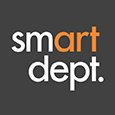I’m retiring. Why is everyone calling me brave?
FORTUNE — A few weeks ago, at the age of 54, I announced my retirement after 30 years in the communications business. The overwhelming response to my surprising news from friends, associates and family who are at least 40-years old is “I am envious.” From the over 50 crowd, there is often the added comment of “and I am right behind you.”
For the under 40s, the response is disbelief. One friend said, “I just don’t believe you. It won’t happen.” This goes as well for the retread or failed retirees. “You will be back!” they warn.
I am not headed to Florida to play golf. I will stay active writing, serving as a director on corporate boards and a maintaining a meaningful non-profit role. But I will not be back. There is too much else that beckons and, as I have discovered, life is both precious and precarious. It needs to be lived fully.
Read the rest on http://finance.fortune.cnn.com!
